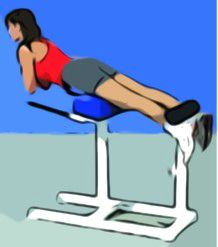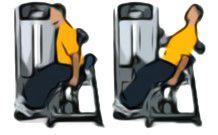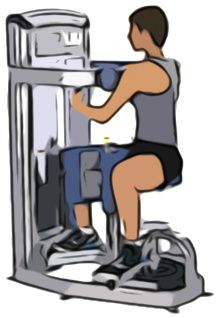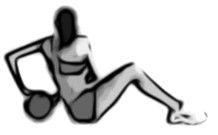I would love a poster or picture of the above to post in our clinic. I get these questions all the time about weight machines, sit ups, supermans, etc…..
- You are here:
- Home »
- Blog »
- Joint Health / Pain »
- The Eight Core Training Exercises To Avoid
The Eight Core Training Exercises To Avoid
“Core strengthening” is a phrase used so often that people no longer actually know what it means.
If you do crunches, is that a “core” exercise?
And what about swiss ball crunches or how about this one in the video below?
[youtube_sc url=”http://youtu.be/oiDyuVwOTBU” autohide=”0″ rel=”0″]How did we get here?
The Origins of Core Training
The concept or “core exercises” has it’s origins in physical therapy.
Researchers discovered two very important things. First, following an injury or surgery, the deep spinal stabilizer muscles (multifidus, rotatores) atrophy. And those muscles do not re-strengthen on their own by just every day activity or even general exercise once the injury or surgery has healed.
This is thought to be one of the reasons that low back pain tends to return in people once they’ve had a “back attack”.
What the researchers found was that by forcing another muscle in the body to contract, the transverse abdominus – a muscle that gives you a flatter belly, the deep stabilizers would contract. This lead to, unfortunately, an over-focus on “sucking in the stomach” type exercises and then a blending of the “sucking in” with swiss ball, balance on a wobble board and a whole bunch of other exercises.
So, now, almost anything is “core training”.
Let’s set some things straight and see if we can get a clearer picture of what core training is and is not and what kinds of drills you should consider.
What Core Training is Not
The top eight core training mistakes:
 |
 |
 |
|
| Sit Up | Swiss Ball Crunch | Superman | |
 |
 |
 |
|
| Roman Chair | Back Extension | Seated Rotation | |
 |
 |
||
| Crunch | Russian Twist |
Why? Because these drills create very high compression forces in your spine (and that translates to much higher risk of injury) and you have a number of other options that carry much less risk of injury and do a better job than any of these drills.
How to Get Started with Core Training
I’ve used a number of drills to help clients rebuild the “core” but the drill selections are based on certain tests to help figure out what’s weak, how hard should you work, and then what drills do you need to start the process.
See, rebuilding your core is more about rebuilding sustained stiffness than muscle strength.
A rock solid core is one that can hold a tense, secure position – protecting the spine and enabling the arms and legs to produce force – for much more than 8 or 10 repetitions. The concept is similar to guide wires on a bridge that, when properly tightened, hold the bridge steady while thousands of cars drive over it. Sustained stiffness.
But remember if you’ve had a “back attack” or surgery, then you can’t just jump full force into some type of core training boot camp. Your spinal muscles are weak. You’ll need to do a little refurbishing first.
To give you some ideas of where to start, most people with a history of back trouble have low endurance of the abdominal and deep spine muscles and have lost the ability to coordinate those regions of the body. Here’s a drill – a variation on one I learned from my super-athletic trainer buddy, Stu Nichols – and one that I use as part of my trumpet training:
- Get a regular, 12″ party balloon. Cost is about 30 cents.
- Lie down on your back and place your feet up on the wall so you hips and knees are at 90 degrees. Hold the balloon with your left hand.
- For optimal results, place your right hand over your head.
- Inhale through your nose and exhale through your mouth into the balloon.
- Blow all the way out until your abdomen muscles and lower back muscles shake.
- Then, blow some more.
- Breathe deeply through your nose, filling up your lungs completely, and repeat.
What happens when you blow up the balloon, without you having to think about it, is that you coordinate your abdominal muscles, chest muscles, and diaphragm. So not only will you get a flatter belly (since the more you do this, the more toned these muscles become and will then, at rest, be tighter), you’ll also give your spine a bit more stability as well. The deep abdominal muscles connect with the muscles in your spine that help guide the spine when you move. So, when you train the diaphragm and deep abdominals, you “wake up” the spinal stabilizer muscles too.
To get a more in-depth look at this process, try my book, Build a Rock Solid Core: Stop the Sit Ups and Save Your Spine.

